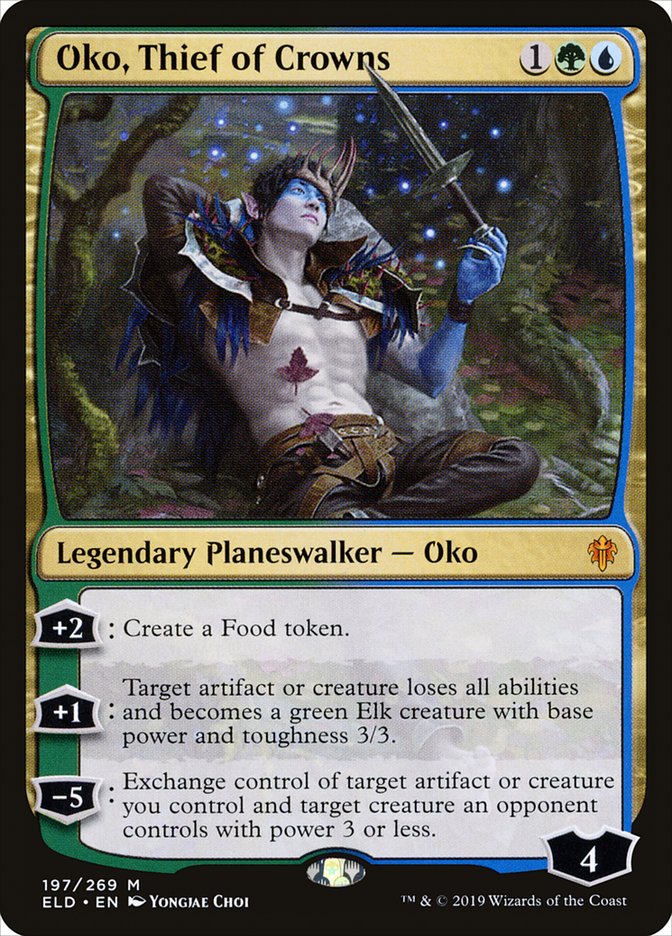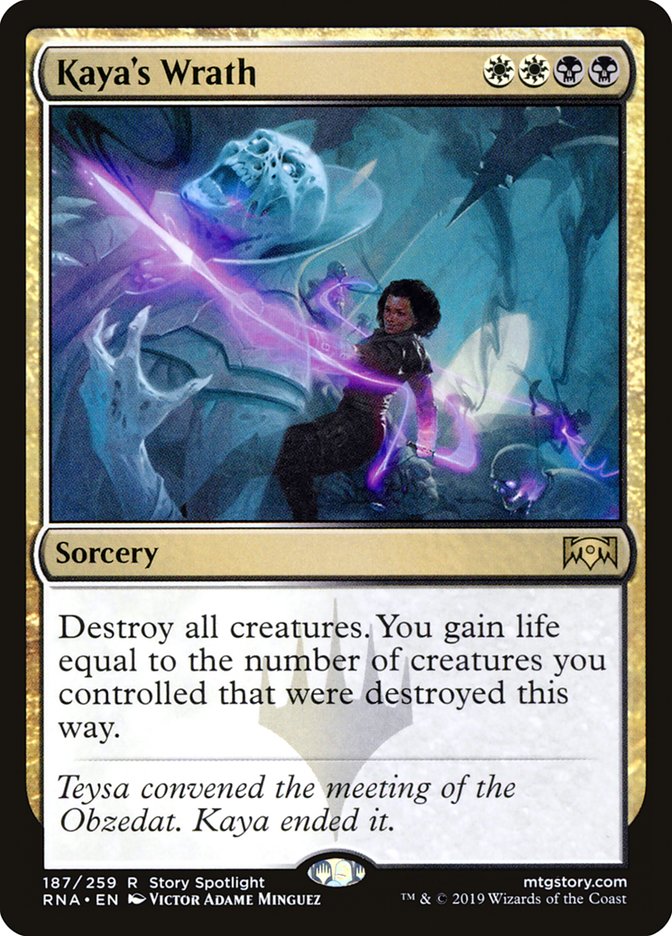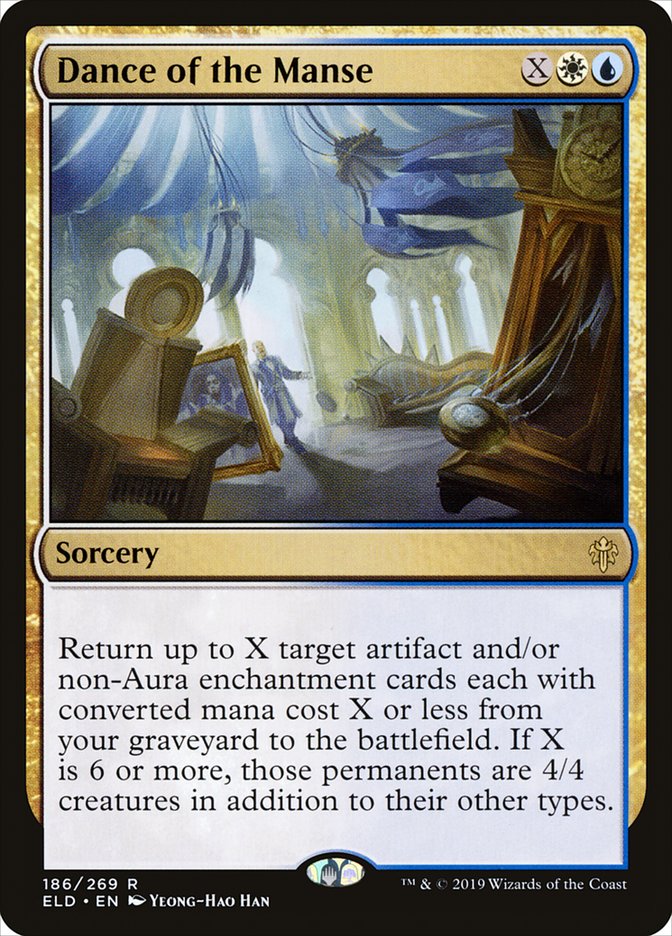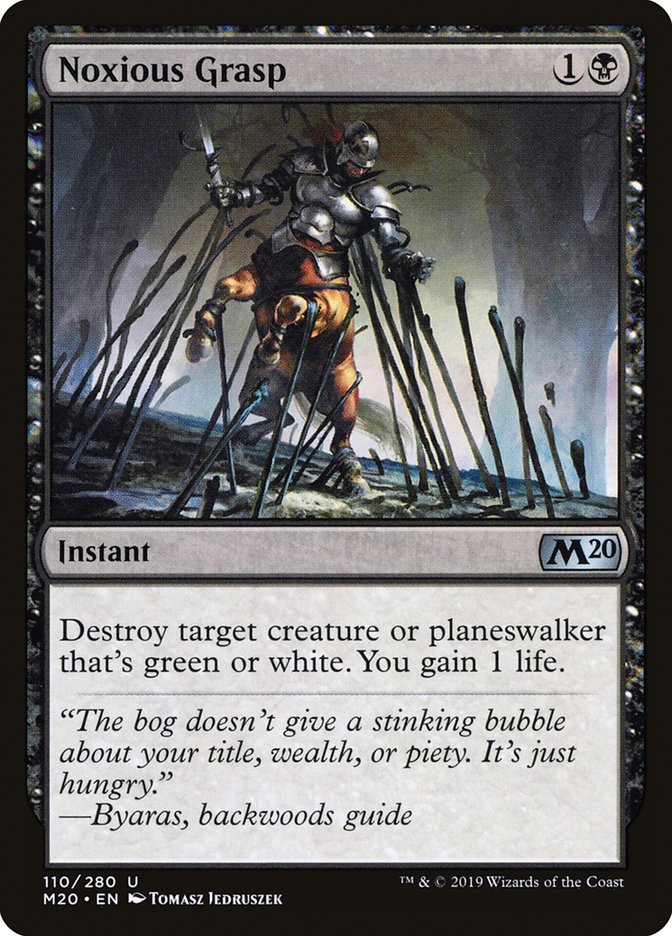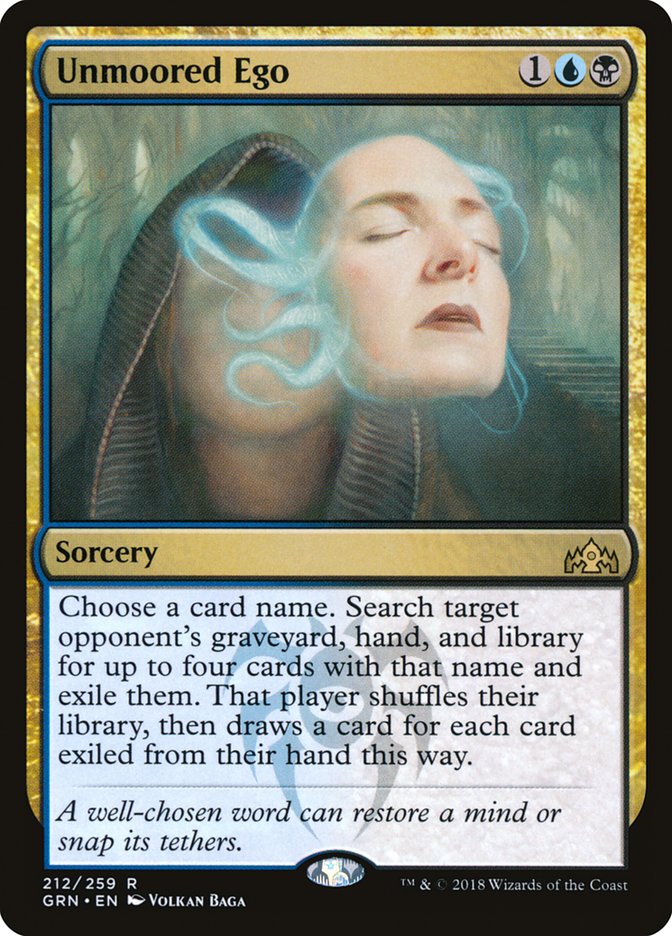What an incredible week of Magic!
The release of Throne of Eldraine has brought us to that beautiful post-rotation world where everything seems possible and any shackles of the previous format have been cast aside. For some, it’s a time to explore new ideas at a leisurely pace, hopping from idea to idea and hoping to strike gold along the way. For others, rotation presents an immediate and impactful dilemma. If you have a PTQ, or an SCG Open, or an online tournament at the start of an undefined format, how exactly are you supposed to find success?
I faced this situation head-on this past week, as I was invited to play in the Fandom Legends Arena tournament with a scheduled start time of just three hours after the online release of Throne of Eldraine. Three days later I was invited to play the Fandom Legends Caster Cup, another small-field tournament with a significant prize pool.
Across the 21 unique players participating in these two events, there were twelve MPL members, four Magic Pro Tour Hall of Fame members, and the best and brightest streamers on the planet.
I am not as good as these players. But two things worked in my favor in these tournaments. First, Magic is a game of variance and the best player doesn’t always win. Second, I’m very good at choosing decks for Week 1 tournaments. Today I’m going to explain why, and it really boils down to four simple principles.
Creatures (2)
Planeswalkers (4)
Lands (25)
Spells (29)

Creatures (16)
Planeswalkers (4)
Lands (28)
- 2 Forest
- 1 Plains
- 2 Island
- 2 Temple Garden
- 2 Breeding Pool
- 2 Hallowed Fountain
- 1 Golgari Guildgate
- 1 Izzet Guildgate
- 1 Selesnya Guildgate
- 1 Simic Guildgate
- 1 Boros Guildgate
- 1 Temple of Mystery
- 1 Temple of Malady
- 1 Tranquil Cove
- 1 Blossoming Sands
- 1 Plaza of Harmony
- 4 Field of the Dead
- 1 Castle Vantress
- 2 Fabled Passage
Spells (12)

Principle 1: Paint with a Broad Brush
Someone once described the foundation of Magic success as being able to reach accurate conclusions from impossibly small sample sizes. To facilitate deck selection in an established metagame, you must accurately estimate matchup percentages of known decks, deduce the expected filtration of decks after many rounds, and figure out what deck properly exploits the winners’ metagame.
This is extremely challenging in the most defined of metas. In an unknown meta, it’s literally impossible. For Week 1, your job is in many ways far more simplistic. Don’t overcomplicate things. Identify broad trends in the format and think about how they can be exploited.
I found myself without an invitation to the Streamer Showcase on this past Tuesday, so I was able to sit back and spend sometime just observing my favorite streamers playing games. I did so by heading over to MultiTwitch.tv and opening fifteen streams simultaneously. You unquestionably lose a lot of the nuance of individual games when trying to observe like this, but what did shine through was a sense that every single battlefield was infested with creatures.
With the dawn of Adventures, many of the best spells in the set come attached to bodies. There was an extremely clear desire to maximize Oko, Thief of Crowns and the Elk tokens it produces. Mana-generating creatures were everywhere. Decks were pushing creature counts of 30+ regularly. It was time for sweepers. Unfortunately, it felt like the best sweeper, Kaya’s Wrath, found itself clearly gated behind mana constraints. Thankfully, Andrew Cuneo stepped to the plate with the first Esper Dance shell I had seen. The deck’s ability to reliably cast Kaya’s Wrath was what first pulled my interest in its direction, but the deck had so much more going for it.
Battlefields were routinely occupied by multiple planeswalkers as well, all kept safe behind a wall of Oko’s Elks and Nissa’s animated lands. Doom Foretold was the way to cut these decks to the quick. Like everyone else on the planet, I initially missed the “nontoken” clause on Doom Foretold. The first time I cast the card and realized no amount of Food was going to save Oko, I was completely enamored. Doom Foretold and sweepers go together like peanut butter and jelly. Your opponents play in a constant state of tension, wanting to go wide to overpower Doom Foretold, but forced to play conservatively to avoid being blown out by Kaya’s Wrath.
When choosing my Bant Golos deck for the Caster Cup three days later, I knew I still believed in the power of sweepers in the format, but I was concerned that people would make appropriate deckbuilding concessions to target Esper Dance’s other play patterns. Indeed, look no further than Mike Sigrist adoption of four maindeck Tamiyos to see how quickly great players can adapt.
Creatures (21)
Planeswalkers (12)
Lands (25)
Spells (2)

Instead of going back to the well, I turned to Realm-Cloaked Giant and the soon-to-be best friend of all Adventure cards everywhere, Once Upon a Time. The fact that Once Upon a Time finds your accelerants and key lands early, your massive threats late, and your sweeper when you need it means that Golos decks have received a significant upgrade. I realized that Field of the Dead would allow me to pressure Esper through Doom Foretold and Kaya’s Wrath and effectively manage Simic’s planeswalkers. The deck achieved this while still reliably sweeping Simic-based decks’ wide battlefields. From a single observation session, I was able to find a shared gameplan for each of my two winning decks.
Principle 2: Take Advantage of Holes in Sideboards
When people are dealing with unresolved metagames, they will often lean into things that they want to be true. It’s not fun to waste a bunch of sideboard slots respecting cards like Field of the Dead or graveyard-based strategies! Players want to formulate their own proactive plans and make opponents account for their threats. While I understand the desire, all but the most aggressive strategies must be contemplative of what an opponent can bring to the table.
Core Set 2020 changed the sideboarding game with its efficient suite of color hosers. Noxious Grasp, Devout Decree, Cerulean Drake, and the rest are extremely strong Magic cards. However, they interact much more with individual cards than with an opponent’s overall goals, and I expected color hosing effects to be par for the course in Week 1 of the new Standard.
There are meaningful cards against Esper Dance and Bant Golos. Large numbers of Unmoored Egos can grab key win conditions, and Ashiok, Dream Render has overlap against both strategies. But these are the narrowest of sideboard options, and in the absence of evidence that decks like Esper Dance and Bant Golos will make up large portions of the metagame, it would be irresponsible to play these cards in large numbers. Finding the strategies that can flourish under overly broad sideboard answers is a huge part of your Week 1 task. It also segues well into my next principle for Week 1 deck selection.
Principle 3: Outscale Everything
If people aren’t appropriately accounting for your deck’s late-game, then they are allowing you to scale in perpetuity. Something like a recursive Agent of Treachery means that Bant Golos is unlikely to ever keep four Field of the Dead on the battlefield, and Ashiok, Dream Render means even a Dance of the Manse for six might be without good targets. But in the absence of these sideboard cards, you gain access to game states which can completely disregard any combination of cards your opponent might assemble.
Simic decks unquestionably can go large by traditional standards. Multiple planeswalkers, Hydroid Krasis with X=12, loads of animated lands… it should all be enough. But these things pale in comparison to an active Golos, a Dance of the Manse returning a couple of Doom Foretolds and drawing four cards, or even just four Field of the Dead sitting on the battlefield. Even something like the incredible-looking Jund Adventures can draw two to three cards per turn and come away looking quaint in the face of a proper Week 1 unchecked late-game.
Creatures (26)
- 4 Foulmire Knight
- 2 Order of Midnight
- 4 Lovestruck Beast
- 4 Beanstalk Giant
- 4 Murderous Rider
- 4 Edgewall Innkeeper
- 4 Bonecrusher Giant
Lands (24)
Spells (10)
Sideboard

It can be challenging to find success as the smaller midrange deck. Usually it requires a very nuanced understanding of the answers you must employ—nuance which is hard to grasp after only a few days of competition. The oppressive late-game of things like Nexus of Fate and Scapeshift completely squeezed out Flood of Tears by the end of the last Standard format, despite the card showing loads of promise early on. In retrospect it’s easy to understand why. When it comes to Week 1, go big or go home early.
Principle 4: Identify Tools That Survived and Found Substantial Upgrades
Masters who understand the power points of the previous format and can quickly seize on any upgrades to key packages are often rewarded with even stronger versions of battle-tested strategies. This step is somewhat in contravention of the other principles discussed here, but if done well, it is one of the best ways to punish others who misstep in their deckbuilding. While I may struggle with identifying the best decks for such upgrades, it is very clear that Brad Nelson does not.
Creatures (27)
- 4 Hydroid Krasis
- 4 Paradise Druid
- 4 Voracious Hydra
- 4 Leafkin Druid
- 4 Gilded Goose
- 4 Wicked Wolf
- 3 Brazen Borrower
Planeswalkers (8)
Lands (25)

Brad went undefeated through the Swiss and quarterfinals, only narrowly falling to my Esper Dance deck in our three semifinal games. Despite my win, I think Brad had the best deck in the tournament. Brazen Borrower was a means of interacting with Doom Foretold that I found persistently terrifying, and Wicked Wolf is the four-drop Questing Beast looks up to—and Questing Beast is already insanely powerful! My decision to play Bant Golos was predicated on the fact that others would recognize just how strong Brad’s deck was. His decision to lean into the mana accelerant / Nissa / Hydroid Krasis package that had previously comprised the backbone of a bevy of Standard archetypes was a wise one.
While I may not have identified a package to carry over, I do think I did an excellent job of carrying over the best individual card in the previous Standard. Teferi, Time Raveler remains as messed-up as ever. People spent an entire Standard conditioning themselves to only play cards that interacted favorably with Teferi. With the release of Throne of Eldraine, it feels like some of that conditioning wore off.
Teferi was the best card in both of my decks by a large margin. It made every game feel like easy mode and invalidated all the reactive answers people were relying on to bail them out against my powerful spells. Don’t lose track of old pillars when the shiny new toys roll out.
Things will likely remain in a state of flux until the first large Standard tournaments occur. If you are playing in this time frame, don’t lose sight of these principles. I have one more tournament before I head to SCG Philadelphia to broadcast the SCG Tour’s first event of the new season. I have no clue what I will play, but you can be sure I’m still exploring new ways to exploit this unrefined meta.


